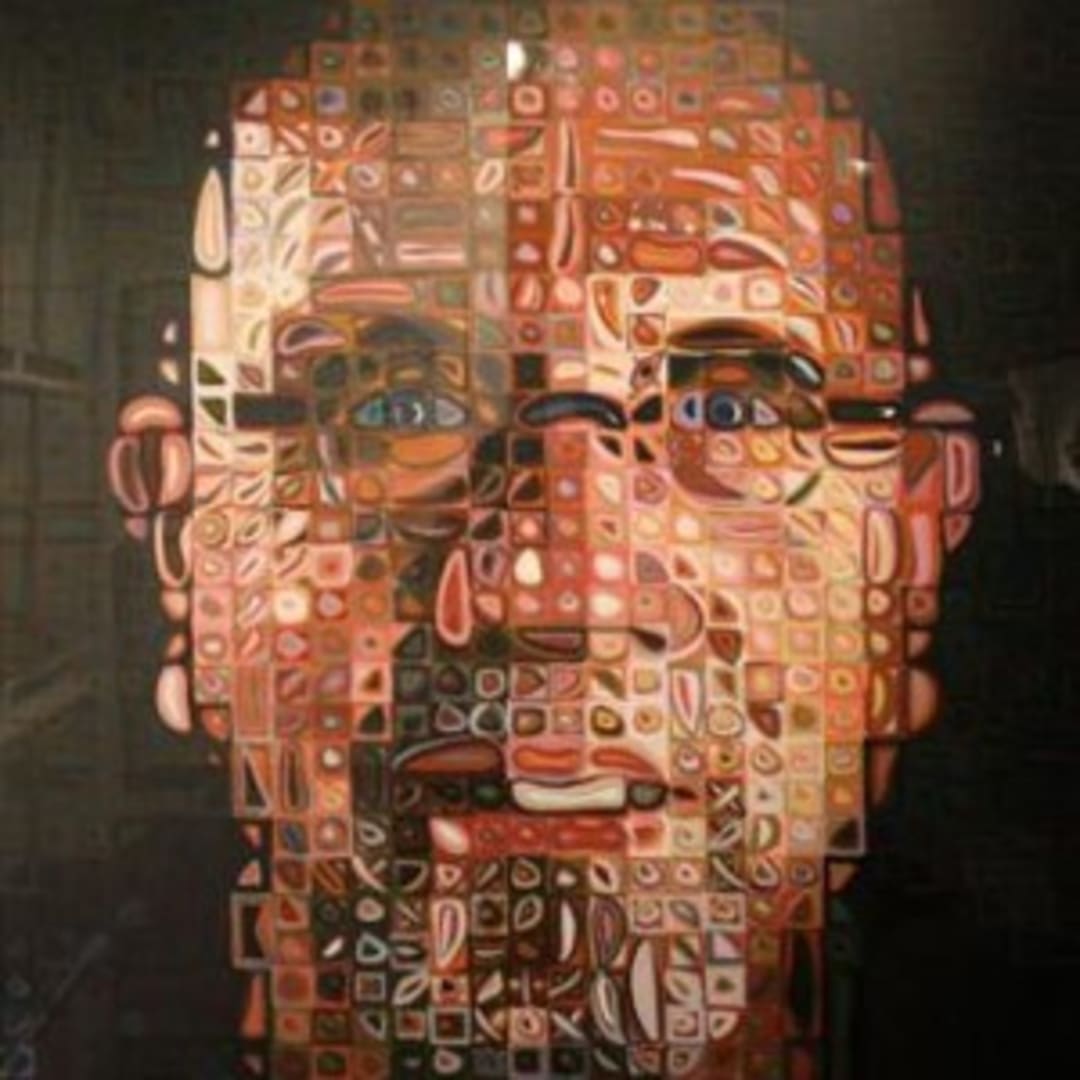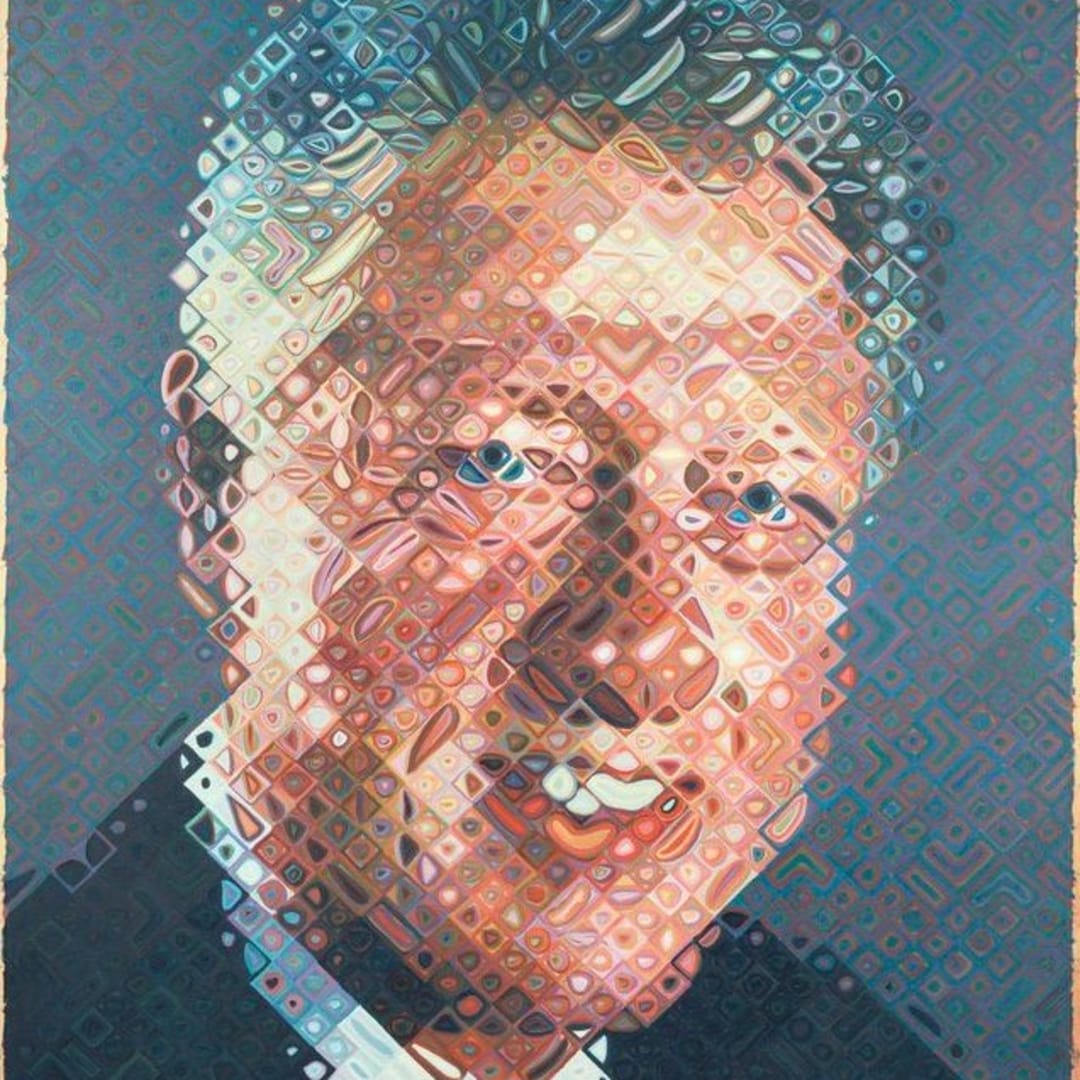For a number of truly gifted artists, pursuing their craft is about something more than acquiring fame and fortune, it’s a chance to prove something important to themselves. Such is the case with American artist Chuck Close, whose foray into hyper-realism and photorealism are chiefly the results of self-serving motivations. While Close credits art critic Clement Greenberg for providing a healthy dose of inspiration, there’s more to the story.
In the late 1960s, when Greenberg declared that, “the one thing left that an artist can’t do is paint a portrait.” Chuck Close reports having famously thought, “All right, I like a challenge, and I won’t have any competition from anyone else. If painting was dead, figurative painting was deader than a doornail, and portraiture was the most moribund of all activities.”1
All right, I like a challenge, and I won’t have any competition from anyone else. If painting was dead, figurative painting was deader than a doornail, and portraiture was the most moribund of all activities.
The truth is that Clement Greenberg’s opinions were simply the tip of the iceberg for motivating Chuck Close. For Close, the act of capturing faces is self-serving beyond any indulgence of ego, the practice stems from an act of preservation. Close suffers from a medical condition called prosopagnosia, also known as “face blindness.” The artist literally has trouble recognizing faces of people who are even intimately close to him. Living with such an ailment means that Chuck Close has time and again unwittingly insulted people with whom he’s shared lengthy conversations and various social interactions, only to not recognize them even one day later.
To consider Chuck Close’s face blindness as his motivation to make portraits his niche, then one must also consider that his remarkable success as an artist is closely tied to overcoming a number of learning disabilities. Close describes his youth as being fraught with troubles emanating from his inability to keep up scholastically with classmates and friends. As a result, he latched onto the one talent he appeared to be gifted in spades. What’s so fascinating about Chuck Close's artwork is that he overcame adversity to become an accomplished Abstract Expressionist painter, only to rather abruptly turn away, toward photorealism. Close challenged himself to find the art form that is indeed uniquely his own.
In addition to overcoming the learning disabilities of his youth, Chuck Close has also managed to persevere in spite of a severe spinal artery collapse suffered in 1988. The incident initially left him paralyzed from the neck down. Fortunately, with physical therapy, the artist regained use of his upper body and has worked continuously, though with assistance. His work is nonetheless still in high demand, for very good reason.
The unique presentation of Chuck Close’s portraits have evolved via a variety of processes over the years. His most recent technique embraces a grid system, with the artist mapping colors, textures, shadows and light − put forth in assortments of shapes – corresponding to sections of the image portrayed in associated spaces on canvas. From a distance, the viewer perceives the "photorealistic" work. Upon closer exploration of individual grid units, the abstraction of the photo rendering can be fully appreciated. One of Chuck Close’s more famous works is the portrait painted of former President Bill Clinton in 2006.
Today, Chuck Close continues to work out of his homes in Manhattan and Bridgehampton, New York. If you’re a collector of Chuck Close, please be sure to visit us at Vertu Fine Art in Boca Raton, FL and peruse our collection of Chuck Close artwork for sale. If you’re seeking a particular piece from this incredibly talented national treasure, please contact us and we’ll be more than happy to assist.




